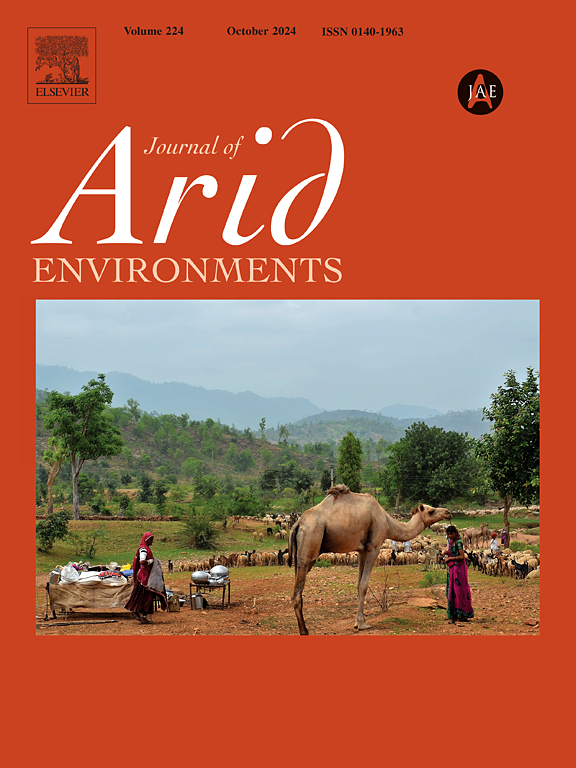Crop growth characteristics in semiarid sandy regions: associations with hydrological years and temporal precipitation patterns
IF 2.5
3区 环境科学与生态学
Q2 ECOLOGY
引用次数: 0
Abstract
Cultivated land is indispensable for promoting sustainable socioeconomic development. Therefore, investigating crop growth is essential for ensuring the stable utilization of cultivated land. This study assessed the spatial and temporal variations in crop growth across hydrological years and investigated the mechanisms linking the temporal distribution of precipitation to crop phenological responses via an integrated analysis of the MODIS EVI and daily precipitation datasets (2002–2020). The findings indicated significant interannual variability in precipitation throughout the spring maize growing season, with only 23.33 % of the years classified as normal. Spatially, crop performance was better in the eastern and southern regions than in the western and northern regions. Crucially, the alignment between precipitation timing and crop phenological stage emerged as a more significant factor than total precipitation. When the timing of water availability mismatches crop water demands, even high precipitation levels may fail to support optimal growth. To increase water use efficiency, adaptive strategies are proposed: prioritizing water allocation during key growth stages, adopting diverse irrigation approaches, and maintaining water conservancy infrastructures. These outcomes are crucial for promoting the sustainable utilization of cultivated land and safeguarding ecological security in semiarid areas.
半干旱沙区作物生长特征:与水文年和时间降水模式的关系
耕地是促进社会经济可持续发展的必要条件。因此,研究作物生长状况对确保耕地的稳定利用至关重要。本研究通过对MODIS EVI和日降水数据集(2002-2020)的综合分析,评估了不同水文年作物生长的时空变化,并探讨了降水时间分布与作物物候响应之间的联系机制。结果表明,在整个春玉米生长季,降水量具有显著的年际变化,只有23.33%的年份属于正常年份。从空间上看,东部和南部地区的作物生产性能好于西部和北部地区。重要的是,降水时间与作物物候期之间的一致性比总降水量更为显著。当水分供应时间与作物需水量不匹配时,即使高降水水平也可能无法支持最佳生长。为了提高水资源利用效率,提出了在关键生长阶段优先分配水资源、采用多种灌溉方式和维护水利基础设施的适应性策略。这些成果对促进半干旱区耕地可持续利用、保障生态安全具有重要意义。
本文章由计算机程序翻译,如有差异,请以英文原文为准。
求助全文
约1分钟内获得全文
求助全文
来源期刊

Journal of Arid Environments
环境科学-环境科学
CiteScore
5.70
自引率
3.70%
发文量
144
审稿时长
55 days
期刊介绍:
The Journal of Arid Environments is an international journal publishing original scientific and technical research articles on physical, biological and cultural aspects of arid, semi-arid, and desert environments. As a forum of multi-disciplinary and interdisciplinary dialogue it addresses research on all aspects of arid environments and their past, present and future use.
 求助内容:
求助内容: 应助结果提醒方式:
应助结果提醒方式:


